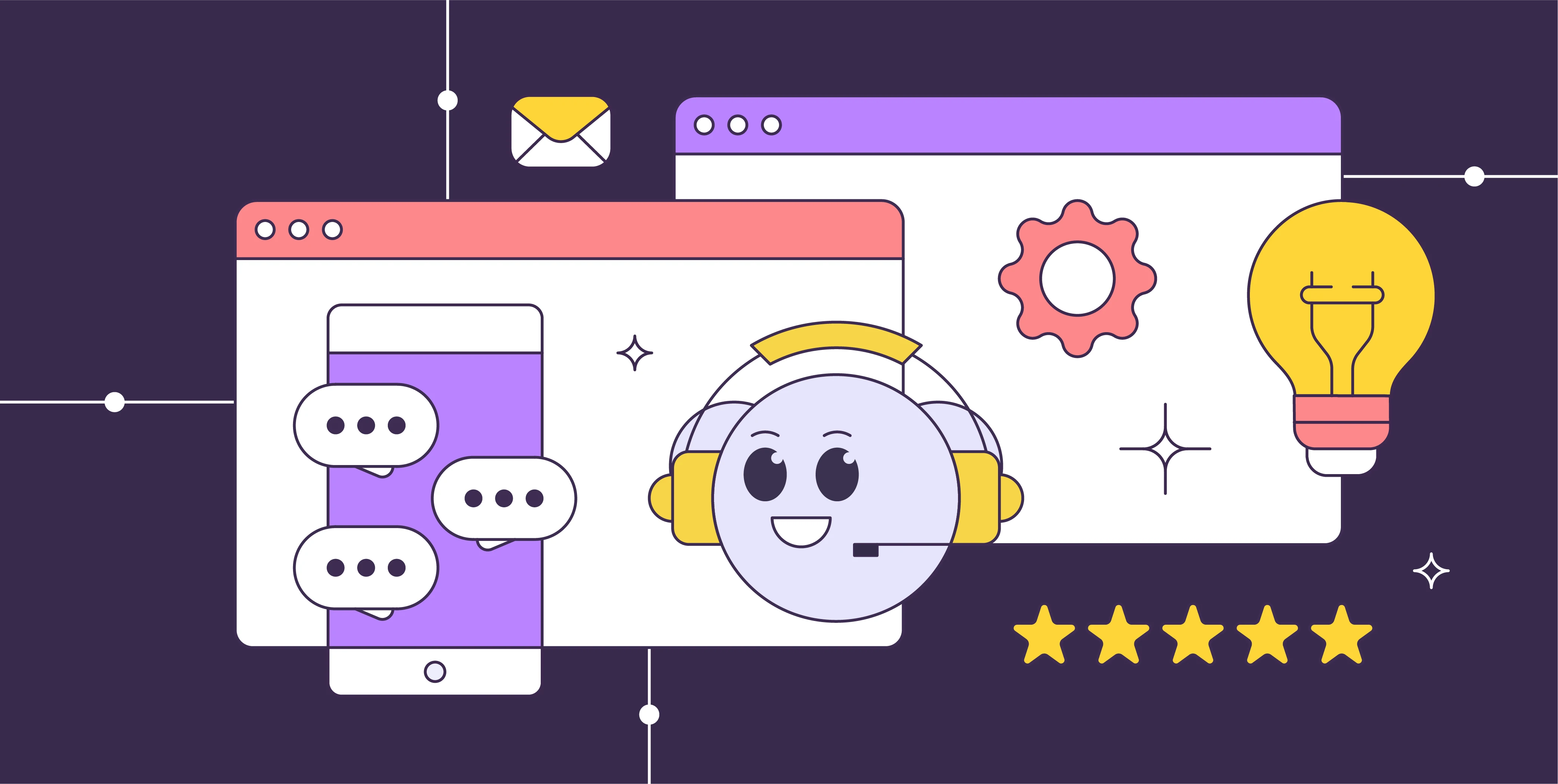Optimizing Customer Feedback Collection with AI: A 2025 Guide to Strategic Improvements
• Customer Support
• FastBank

"There is only one boss: the customer. And he can fire everybody in the company, from the chairman down, simply by spending his money elsewhere." These words serve as a stark reminder from the founder of Walmart - Sam Walton, that in business, the ultimate authority rests in the hands of those who consciously choose to support a brand.
Understanding and acting on customer feedback is essential to businesses because customer insights help you draw a roadmap toward customer-centricity.
However, navigating the vast sea of opinions can be overwhelming and time-consuming for businesses.
The good news is that the days of guesswork and uncertainty are gone, with AI customer feedback tools in the picture.
In this article, we'll touch upon the transformative impact of AI on feedback collection and analysis.
Without further ado, let's get started.
Traditional Means of Feedback Collection: Limitations and Challenges
Traditional feedback collection methods, like surveys, comment cards, and face-to-face interactions, have long lived their lives. While these methods have served their purpose, they come with limitations and challenges that can hinder the effectiveness of gathering valuable customer feedback.
Firstly, surveys often have low response rates and can cause survey fatigue. Customers bombarded with lengthy questionnaires may rush through or abandon them, resulting in twisted data and incomplete information. Similarly, comment cards left in-store or handed out at the end of a service can easily be overlooked or disregarded.
As for face-to-face interactions, while valuable for building relationships, they are limited by geographical constraints and time availability. Additionally, in-person communication may lead to biased responses, as customers may avoid confrontation and hesitate to share negative feedback.
The Role of AI in Feedback Collection
Unlike traditional methods that rely on manual analysis and subjective interpretation, AI brings a new level of efficiency and accuracy to the process.
One of the most significant roles of AI in feedback collection is its ability to provide real-time customer insights. With AI-powered customer feedback tools, businesses can access up-to-the-minute feedback from various channels, including social media, online reviews, and customer surveys. This immediacy allows companies to stay agile and responsive and address issues as they arise.
Benefits & Use Cases
Advanced Predictive Analytics: Using customer feedback tools gives businesses proactive foresight into emerging trends and behaviors. By analyzing comprehensive datasets, companies stay agile in their anticipations of the market dynamics. This approach fosters continuous adaptation and innovation, positioning businesses for sustained competitive advantage.
Real-Time Data Processing & Analytics: By analyzing data as it is generated, businesses can quickly respond to customer concerns. The agility with real-time data processing and analytics enables businesses to adapt their strategies on the go and respond without delays.
Customer Journey Mapping: With AI-powered customer feedback analysis, businesses can build a detailed roadmap of the customer experience. By examining feedback data at each touchpoint, businesses gain insights into customers' emotions, preferences, and pain points throughout their journey.
Microtargeting Opportunities: Customer feedback collection via AI tools unlocks a lot of microtargeting opportunities for businesses. This way, companies can segment their audience into highly targeted groups based on specific criteria, such as demographics, purchasing history, and more. The next step is delivering personalized messages, offers, and experiences to each segment while increasing relevance and engagement.
From Theory to Practice: Implementing AI into Feedback Collection
Transitioning from theory to practice, integrating AI into feedback collection is a crucial milestone for businesses seeking to enhance their understanding of customer needs.
Here are the top three customer feedback tools that have proven invaluable in achieving a rapid first-response time and driving up customer satisfaction.
Advanced Customer Feedback Tools
Hoory AI is a customer support automation tool fueled by modern AI technologies like conversational AI, natural language processing, and machine learning. Hoory AI not only allows you to collect customer feedback but also identifies which agents are underperforming or which parts of the customer experience are failing. Aside from feedback collection, you can utilize the ready-made templates for lead generation and scoring, quizzes, product recommendations, and more. Hoory AI ensures glitch-free customer support 24/7. It is armed with an impressive package of features and functionalities, including omnichannel inboxes, two types of AI assistants - knowledge-based and rule-based, multilingual text and audio support, advanced reporting, and more.
Glide AI simplifies customer feedback collection process by offering features like concise summarization of feedback and sentiment analysis. The latter categorizes feedback into positive, negative, and neutral sentiments. Glide AI also helps identify immediate action items to promptly address pressing customer concerns.
Userlytics is a versatile customer feedback collection tool designed to provide valuable insights into user behavior. With Userlytics, companies can conduct remote user testing sessions, gather real-time feedback, and analyze user experiences to optimize their digital assets effectively. Userlytics offers a comprehensive suite of testing and analysis tools to meet the diverse needs of businesses. From moderated and unmoderated testing to prototype and accessibility testing, the software helps you evaluate user experiences across various digital platforms.
Additionally, the platform offers functionalities of AI UX analysis, empowering businesses to derive meaningful insights and optimize strategies accordingly.
Conclusion
Integrating AI into customer feedback collection represents a significant leap forward for businesses seeking more profound insights into customer preferences and behaviors.
Through powerful AI algorithms, businesses can navigate enormous amounts of feedback data, uncovering nuanced insights and actionable patterns.
In other words, AI enables businesses to meet and exceed customer expectations, from enhancing product offerings to refining customer support processes.

























